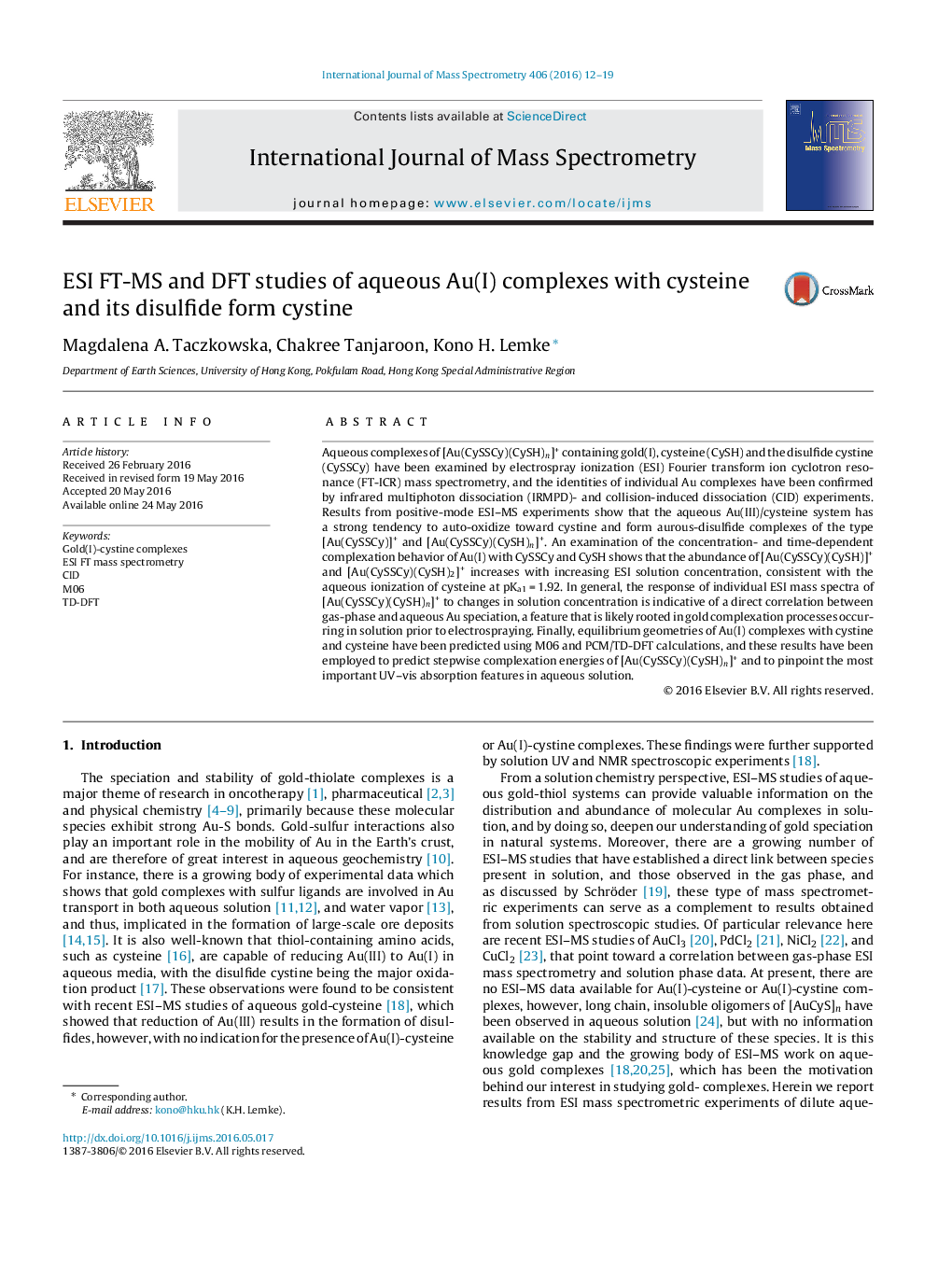| Article ID | Journal | Published Year | Pages | File Type |
|---|---|---|---|---|
| 1192556 | International Journal of Mass Spectrometry | 2016 | 8 Pages |
•FT-MS experiments of aqueous AuCl3:cysteine capture cystine formation and Au-cystine complexation.•Results from CID and IRMPD fragmentation experiments confirm identity of [Au(CySSCy)(CySH)n]+ complexes with n = 0–2.•Concentration- and time-dependent ESI–MS experiments with [Au(CySSCy)(CuSH)n]+ provide a direct molecular link between gas and solution phase speciation.•[Au(CySSCy)(CySH)n]+ complexes are unstable and lost from solution within a short time period.•Theoretical DFT complexation energies for [Au(CySSCy)(CySH)n]+ mirror ion signal trends measured by FT-MS.
Aqueous complexes of [Au(CySSCy)(CySH)n]+ containing gold(I), cysteine (CySH) and the disulfide cystine (CySSCy) have been examined by electrospray ionization (ESI) Fourier transform ion cyclotron resonance (FT-ICR) mass spectrometry, and the identities of individual Au complexes have been confirmed by infrared multiphoton dissociation (IRMPD)- and collision-induced dissociation (CID) experiments. Results from positive-mode ESI–MS experiments show that the aqueous Au(III)/cysteine system has a strong tendency to auto-oxidize toward cystine and form aurous-disulfide complexes of the type [Au(CySSCy)]+ and [Au(CySSCy)(CySH)n]+. An examination of the concentration- and time-dependent complexation behavior of Au(I) with CySSCy and CySH shows that the abundance of [Au(CySSCy)(CySH)]+ and [Au(CySSCy)(CySH)2]+ increases with increasing ESI solution concentration, consistent with the aqueous ionization of cysteine at pKa1 = 1.92. In general, the response of individual ESI mass spectra of [Au(CySSCy)(CySH)n]+ to changes in solution concentration is indicative of a direct correlation between gas-phase and aqueous Au speciation, a feature that is likely rooted in gold complexation processes occurring in solution prior to electrospraying. Finally, equilibrium geometries of Au(I) complexes with cystine and cysteine have been predicted using M06 and PCM/TD-DFT calculations, and these results have been employed to predict stepwise complexation energies of [Au(CySSCy)(CySH)n]+ and to pinpoint the most important UV–vis absorption features in aqueous solution.
Graphical abstractFigure optionsDownload full-size imageDownload high-quality image (193 K)Download as PowerPoint slide
